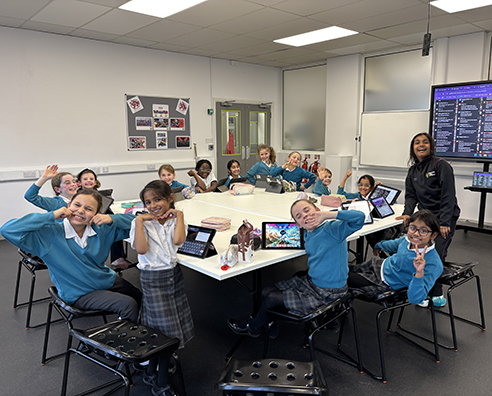
This week, our Year 4 pupils began an insightful journey through history, blending it with technology.
After their educational trip to the British Museum, where they explored Ancient Egypt and Rome, the girls returned eager to further their understanding of history through engaging, hands-on learning.
In their digital sessions with Mrs Hudson-Findley (Director for Digital Learning, Sustainability and Enterprise), they were introduced to The Living Museum AI app, which allowed them to interact with artefacts from the past as if they were alive. Through this incredible technology based upon the real collections held in the British Museum, hieroglyph-inscribed jars "spoke" about their creation, and a Roman wine jug "shared" its journey across ancient sea trade routes. The girls were fascinated as these relics responded to their questions and shared their stories, helping them uncover the rich tapestry of ancient civilisations beyond the textbook.
They then went on to meet their first AI expert Cato Maximus, our dedicated Classics Chat Bot, who was put through its paces. Students turned to Cato to dive deeper into their research, asking questions through inquiry-based themes such as ancient education systems, comparing them to modern learning methods. This inquiry-based approach seamlessly supported their IB PYP unit, where they are examining how ancient civilisations shape the present and inspire the future.
By blending AI with historical exploration, we’re transforming learning into a dynamic and immersive experience. Year 4’s work this week showcases how technology can enrich education, sparking curiosity and critical thinking. It’s a perfect example of how we are integrating digital innovation into our curriculum, helping students not just to study history, but to truly connect with it.





















